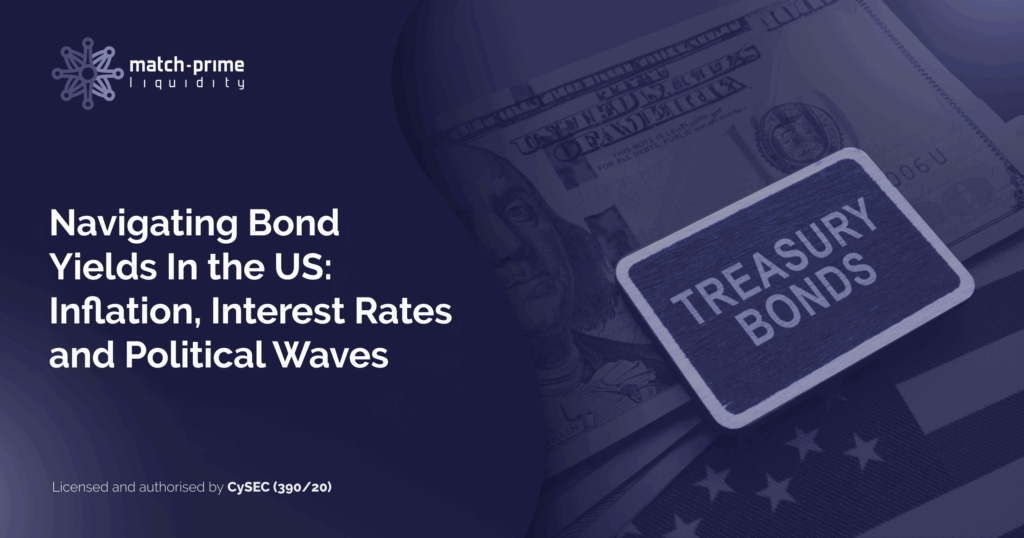The yield on 10-year US Treasury bonds is one of the most important indicators in the world of finance. It influences interest rates on loans, mortgages and corporate bonds—in other words, the cost of borrowing for businesses. It also serves as a benchmark discount rate for equity valuation and as a proxy for the risk-free rate. But is the yield on a bond maturing ten years from now truly controlled by any one person, particularly the Chair of the FOMC, Jerome Powell, as President Donald Trump often claims? Can Powell and the rest of the FOMC directly drive down the yield on 10-year Treasuries by cutting interest rates? Let’s take a closer look.

Three Components of Nominal Treasury Yields
Nominal yields—the commonly quoted figures such as 4.5% or 4.2%—are not a single-value metric but rather the result of multiple components.
The first of these is inflation expectations. This reflects how much return investors demand to preserve the purchasing power of their money over time. When inflation is expected to rise before the bond matures, nominal yields tend to increase in response. Conversely, when a sustainable decline in inflation seems likely, nominal yields typically fall alongside falling inflation expectations.
The second factor is the term premium, which represents the extra compensation investors require for holding longer-term debt. The term premium can rise during times of political uncertainty, fiscal instability or expectations of large budget deficits and increased future bond issuance. This component can also be influenced by tensions surrounding the Fed and political pressure on Powell.
The third component is the real yield, reflecting the underlying health of the economy, net of inflation expectations. When macroeconomic data deteriorates, real yields tend to decline. Conversely, improving economic prospects push real yields higher.
In summary, political pressure from Trump—particularly his calls for Powell to cut rates—can only influence one of the three components of nominal yields: the term premium. And even then, not fully, as deficits and supply expectations also play a significant role.
Lower Fed Rates, Higher Bond Yields? Insights from 2024
In 2024, the FOMC decided to cut interest rates ahead of the US election. Surprisingly, this was followed by a rise in the yield on 10-year Treasuries. This market response suggests that the central bank’s short-term interest rate policy may have limited impact on the pricing of long-term bonds—i.e., the long end of the yield curve.
At the time, investors began pricing in the assumption that a Trump-led policy agenda would lead to higher fiscal deficits, and therefore a greater future supply of Treasuries, driving up the term premium. Additionally, the inflationary impact of potential tariffs also influenced inflation expectations—further pushing nominal yields higher.
These factors help explain why bond yields—and consequently loan and mortgage rates—rose even as the Fed cut rates.
What Is the “Powell Hedge”?
Due to Trump’s public pressure to remove Powell—whose term ends in May 2026—the market has developed what is known as the “Powell hedge.” This strategy involves buying 2-year Treasuries while shorting 10-year Treasuries.
The rationale is that if a more dovish Fed chair replaces Powell, they might aggressively cut interest rates. In this case, short-term yields (like the 2-year) would likely fall rapidly, pushing their prices up. However, longer-term yields (like the 10-year) might not fall as much—or at all.
Why? Because lower short-term rates “today” could lead to higher inflation or stronger growth “tomorrow”, raising both inflation expectations and real yields on the long end of the curve. Additionally, the appointment of a dovish Fed chair could erode confidence in US fiscal and monetary discipline, potentially affecting the country’s credit rating and increasing the pressure to sell long-term bonds.
Ironically, the “Powell hedge” works against Trump’s intended outcome, as his pressure on Powell may be directly contributing to higher 10-year bond yields by increasing uncertainty.

